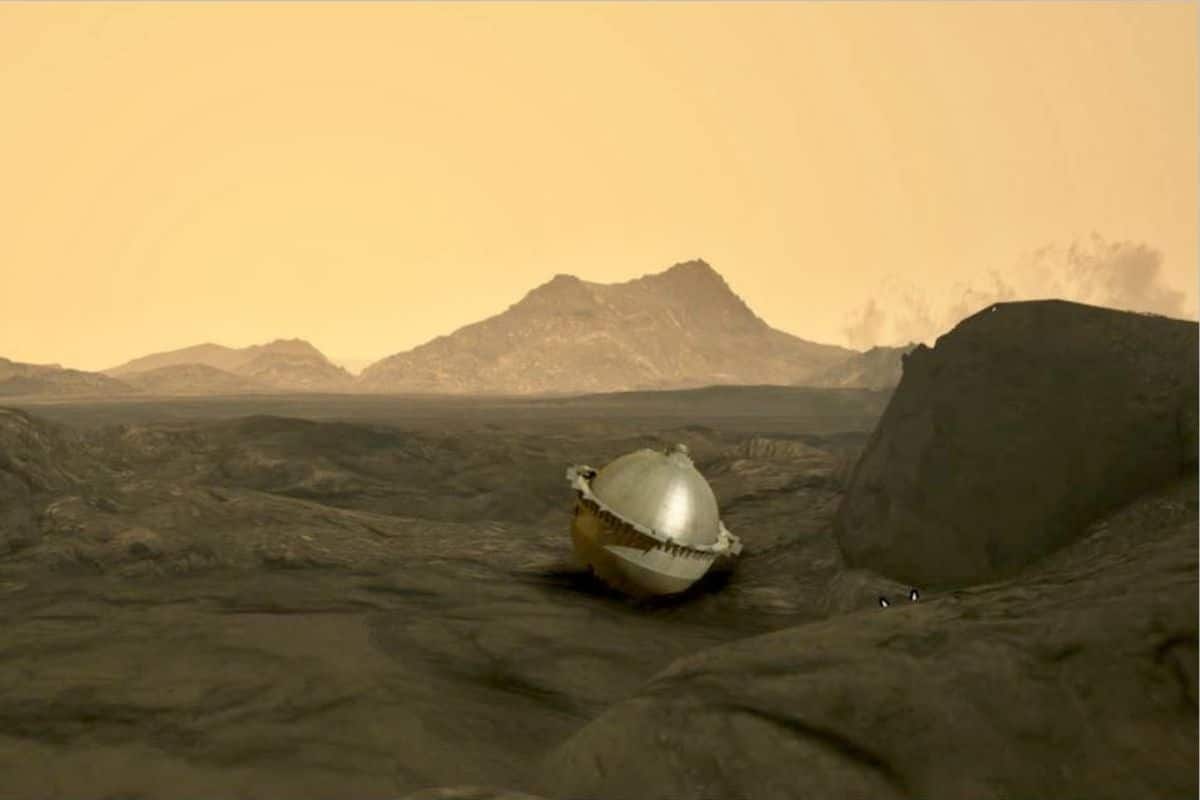
The flying lab will study the composition of the Venusian atmosphere while also shooting some, hopefully many, more revealing photos.
A year ago, NASA released an enthusiastic announcement. The US space agency plans to pay a visit to our ‘evil twin sister’ Venus by the end of this decade. Meanwhile, the mission is getting more and more fleshed out. And in a new study, NASA is revealing more details about this exciting and daring upcoming journey, which could change our view of the still-mysterious planet forever.
Venus is often described as Earth’s unlivable twin sister. But at the same time, we actually know very little about her, so she’s still a real mystery to us. Venus is similar to Earth in many ways. The planet – which is slightly closer to the sun – is roughly the same size and has a similar structure, mass and density. But the similarities pretty much end there. Venus is dealing with a serious greenhouse effect that has gotten out of hand. The thick atmosphere traps all the heat, causing surface temperatures to reach 465 degrees Celsius. In addition, the planet is surrounded by a layer of clouds laced with corrosive sulfuric acid. It is believed, however, that it has not always been this way. Many scientists think that Venus in principle resembled much more from Earth and even harbored water. If they’re right, the big question is what led the planet to move in such a different direction at one point and look so very different from Earth today.
The mission has been named DAVINCI by NASA, which stands for Deep Atmosphere Venus Investigation of Noble gases, Chemistry, and Imaging† With this mission, NASA wants to study the composition of the Venusian atmosphere to understand how it formed and evolved.
The Journey to Venus
The mission is expected to launch in July 2029. Then, approximately 6.5 months later, DAVINCI will conduct a first flyby skim past Venus. Eventually the probe will be three flybys complete, in which it will collect cloud cover and surface data using various instruments. “We hope to paint a picture of the stratified atmosphere and how it then interacts with the surface, especially the mountains of the Alpha Region,” said lead researcher Jim Garvin. “These measurements allow us to evaluate historical aspects of the atmosphere and detect special rocks on the surface, such as granite. And that while we also look for telltale landscape features that can tell us whether erosion or other formation processes are taking place on Venus.”
It will then take about two years to get the probe into position, but after that it will penetrate the atmosphere above the Alpha Region.
Dive flight
Indeed, because the intention is that the spacecraft will dive into the hellish Venusian atmosphere. DAVINCI is actually a kind of flying laboratory, which will make its way through the planet’s thick atmosphere, taking precise measurements of the noble gases and other elements. The hope is that in this way still undiscovered gases will be brought to light, which reside in small quantities in the Venusian atmosphere. In addition, scientists hope to stumble upon certain water isotopes; components of water that will contribute to our understanding of the evolution of water on Venus. In this way, the researchers hope to determine whether the planet once harbored an ocean or perhaps just had a thick, steamy atmosphere.
gas sample
DAVINCI will then descend further and further to the surface. At about 120 kilometers above the surface, the probe will shed its heat shield and will “breathe” the local atmosphere of Venus. In this way, the probe will collect similar atmospheric gas samples as the Curiosity robot cart on planet Mars.
photos
This further descent will also yield the first pictures of the mountainous highlands of Venus. Hundreds of images will be produced once the probe emerges below the clouds about 30,500 meters above the surface. This allows the rock composition and surface relief to be mapped at scales not possible from Earth orbit.
Landing on Venus
Eventually, DAVINCI will even land in the mountains in the Alpha Region. “But once it lands, it doesn’t necessarily have to function anymore,” said study researcher Stephanie Getty. “All required scientific data will be collected before the probe reaches the surface. But if we survive the landing at about 12 meters/second, we should have 17 to 18 minutes on the surface under ideal conditions.”
With this exciting mission, the researchers hope to unravel existing secrets about our evil twin sister and, among other things, find out whether Venus may have ever been a habitable planet. The mission will therefore go further than previous missions to Venus. “None of these previous missions have been able to measure the chemistry or environment in great detail that DAVINCI is going to do,” said Garvin. “In addition, no previous mission has landed on Venusian highlands and no pictures have been taken before. DAVINCI will therefore be an important step forward, with 21st century capabilities and sensors.”
Source material:
†NASA’s DAVINCI Mission To Take the Plunge Through Massive Atmosphere of Venus” – NASA
Image at the top of this article: NASA’s Goddard Space Flight Center